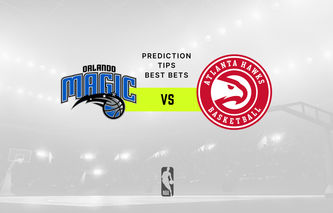Betting on sports adds an extra layer of excitement to any game, but understanding how to calculate your potential payouts is crucial for making informed bets.
Whether you're a seasoned bettor or just starting, knowing the ins and outs of odds and payouts can significantly impact your overall experience and success.
In this article, we'll break down the essential steps to calculate payouts, demystify betting odds, and provide practical examples to help you navigate the world of sports betting with confidence.
Understanding Odds
Odds are the cornerstone of sports betting, representing the probability of an event occurring and determining the potential payout.
There are three main types of odds used in sports betting:
1. American Odds
American odds are either positive or negative and are primarily used in the United States.
Positive Odds: These indicate how much profit you would make on a $100 bet. For example, if the odds are +150, a $100 bet would yield a $150 profit, plus the return of your initial $100 stake, totaling $250.
Negative Odds: These show how much you need to bet to make a $100 profit. For example, if the odds are -200, you would need to bet $200 to make a $100 profit, plus the return of your $200 stake, totaling $300.
2. Decimal Odds
Decimal odds are common in Europe, Canada, and Australia. They represent the total payout (including the stake) per unit bet. For example, if the odds are 2.50, a $100 bet would return $250 (2.50 * $100).
3. Fractional Odds
Fractional odds are traditional in the UK and Ireland. They represent the profit relative to the stake. For example, if the odds are 3/1, a $100 bet would yield a $300 profit, plus the return of your $100 stake, totaling $400.
Calculating Implied Probability
Understanding the implied probability from the odds can help you gauge whether a bet offers good value.
The implied probability is the probability that the odds suggest an event will happen.
1. American Odds
For positive odds: Payout = Stake * (Odds / 100) + Stake
For negative odds: Payout = Stake * (100 / |Odds|) + Stake
If you bet $100 on a team with +150 odds:
Payout = 100 (150 / 100) + 100 = 100 1.5 + 100 = 250
If you bet $100 on a team with -200 odds:
Payout = 100 (100 / 200) + 100 = 100 0.5 + 100 = 150
2. Decimal Odds
Payout = Stake * Odds
If you bet $100 on a team with 2.50 odds:
Payout = 100 * 2.50 = 250
3. Fractional Odds
Payout = Stake * (Numerator / Denominator) + Stake
If you bet $100 on a team with 3/1 odds:
Payout = 100 (3 / 1) + 100 = 100 3 + 100 = 400
Practical Considerations
When calculating payouts, also consider the following factors:
1. Stake Amount
Your potential payout is directly proportional to the amount you stake. The higher your bet, the greater your potential payout, but also the higher your risk.
2. Bet Types
Different types of bets can affect your payout calculations:
Single Bet: Betting on a single outcome.
Parlay/Accumulator: Combining multiple bets into one. All selections must win for a payout, but the odds multiply, increasing potential payouts significantly.
Each-Way Bet: Common in horse racing, where you bet on a selection to win and to place. This often splits your stake into two separate bets.
3. Bookmaker Margins
Bookmakers include a margin in their odds to ensure a profit. This means the implied probabilities of all possible outcomes typically add up to more than 100%. This overround or vigorish ensures the bookmaker’s profit margin.
Final thoughts
Calculating payouts in sports betting is a fundamental skill for any bettor.
By understanding and applying the methods for American, decimal, and fractional odds, you can make informed decisions and manage your betting strategy more effectively.
Remember to consider the implied probability and the type of bet you are placing to maximize your potential returns while managing risk.
Make sure to use a safe and legal sports betting site or app that offers fair odds, we've written comprehensive guides for both:






